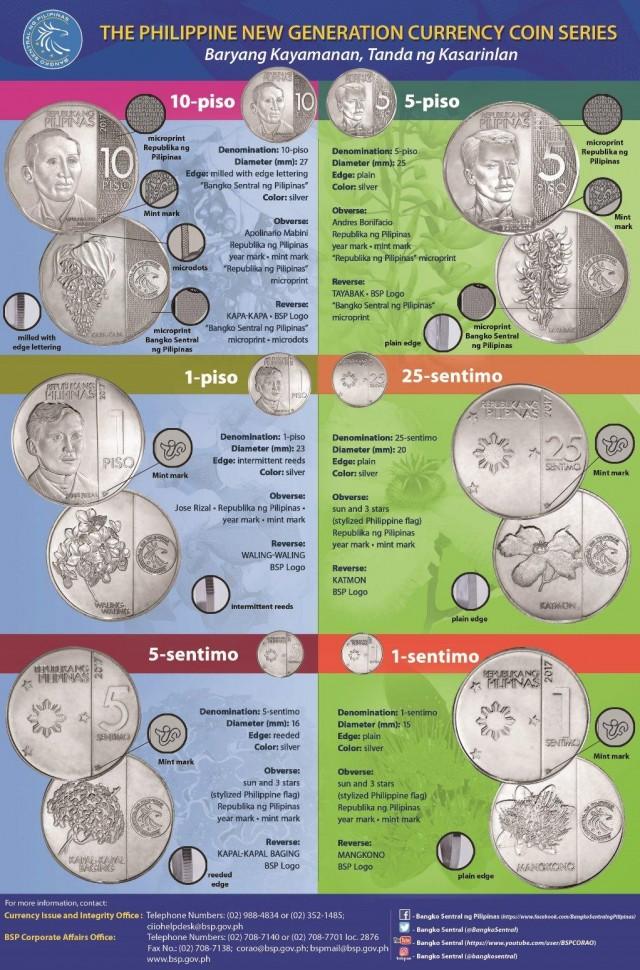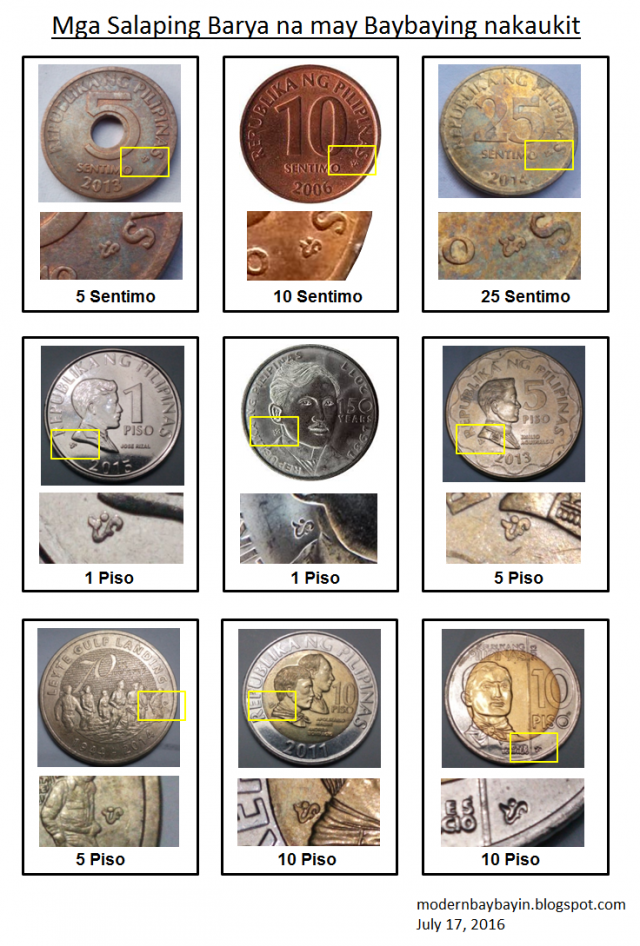Is Baybayin really set to change the way we write?
Can you imagine making a grocery list in Baybayin script?
The idea is not far-fetched.
Last April, the House Committee on Basic Education and Culture approved the proposed “National Writing System Act,” which will require all manufacturers of locally-produced food products to include corresponding Baybayin translation on their labels.
Authored by 2nd District of Pangasinan Representative Leopoldo Bataoil, House Bill 1022 also seeks to insert Baybayin translations to newspaper and magazine mastheads and signages for streets, government buildings and other public facilities likes hospitals, fire and police stations, and community centers.
Bataoil’s campaign started in 2011, when he made a privilege speech to the same august halls, for his proposed House Bill 4395 (“An Act Providing for the Protection and Conservation of Baybayin, and Declaring Baybayin as the National Script of the Philippines”).
The bills were supported by the Department of Education (DepEd), the National Commission for Culture and the Arts (NCCA), and the advocacy group Baybayin Buhayin.
While in the Senate, a similar proposal, the Senate Bill 433, which also seeks to declare Baybayin as the National Writing System of the Philippines, remained pending since it was filed by Senator Loren Legarda in 2016.
But what really is Baybayin? And why has it been gaining ground?
READ: An exhibit on Baybayin Art is on display at the NCCA gallery until August 31
All Over The Map
You may not have noticed it, but Baybayin pass through our hands all the time. Get a paper bill — any denomination — and look at the lower right hand side of the obverse design. When the note is viewed against the light, you'll notice a four-letter ancient script which spells the word “Pilipino.” It first appeared in the New Generation Currency series of the Philippine peso issued in the last quarter of 2010.
In addition, the New Generation Currency (NGC) Coin Series released this year also have the Baybayin script for “Pi” as it’s mint mark.

But this is not the first time that Baybayin is featured in our money. As Baybayin.com founder Kristian Kabuay noted, “It’s been on Peso bills in the 1940’s on the Katipunan flag.”

Government cultural agencies — like the National Commission for Culture and the Arts, National Historical Commission of the Philippines, Pambansang Museo, National Library of the Philippines, and Cultural Center of the Philippines — have already taken the initiative in using Baybayin in their seals.
The National Archives of the Philippines logo also shows the part of the Calatagan pot inscribed with Baybayin.
The National Museum of Anthropology has installed a splendid Baybayin section. Aside from the Calatagan pot, it houses the Laguna copperplate, Manunggul jar, Butuan ivory seal and several other artifacts.
As Part of the Curriculum
Millennials have been introduced to Baybayin in school, as part of the lesson in the history of Philippine languages.
Senior High School students are taught how to write Baybayin through the core subject ‘Komunikasyon at Pananaliksik sa Wika at Kulturang Pilipino.’
Poet-musician and college instructor Joel Costa Malabanan said he started teaching Baybayin to his Grade 5 students more than two decades ago.
“Nagimula akong magturo ng Baybayin sa klase ko sa Sibika at Kultura noong 1995. Iyong isa kong estudyante, si Levi Miranda, na isang engineer na ngayon, ay nakabuo na ng sarili niyang Omiglot system ng Baybayin,” he related.
The students did not have a hard time picking up the lesson since, he explained, “Naipaliwanag ko naman na bahagi ito ng pagtatangkang buuin ang pagkakakilanlan nating mga Pilipino.”
Malabanan was able to continue his advocacy when he started teaching Filipino to high school students in 1997. One of his students was Ivan Despi, even designed a Baybayin translation of the word ‘matanglawin,’ for a TV show.
“Mali pa ang unang design dahil per letter ang ginawa ni Ivan. Itinama ko pa sa PM ko sa kanya sa Multiply, wala pang FB noon,” he said.
When Malabanan transferred to Philippine Normal University (PNU), he started teaching Baybayin in the course subject ‘Masining na Pagpapahayag.’
“Ikinatutuwa naman ito ng mga magiging guro, lalo pa at sa pagsulat nila ng Tanaga at Dalit ay pinalalagyan ko ng Baybayin.”
Tanaga and Dalit are four-lined forms of native poetry in the country.
Baybayin Chasers
The wave of interest in Baybayin has lead to something similar to “storm chasing.” Netizens habitually post sightings of Baybayin on social networking sites under the hashtag #baybayinspotted.
Hobbyists meanwhile share their own handwritten Baybayin translations of phrases with pride. Tattoo enthusiasts have their skin inked with Baybayin “tribal” designs, while artists incorporate Baybayin in their pastel or watercolor art.
US-based artist Norman de los Santos create calligraphy art where he fused Baybayin letters fuse with each other to form the figure they represent together.
Even before Bataoil’s HB 1022 was approved in the House committee, enthusiasts have already created unofficial Baybayin graphic designs for commercial brands.
Using de los Santos’s fonts, Johnrel Buenaventura Lor and Obet Montales of the Facebook group Famous Logos in Baybayin Script and etc. have created logos of commercial brands known in the country.
Several Baybayin mobile applications have also been made available to the public, including the Baybayin Keyboard and the Baybayin translator.
Last April, graphic design studio TeamManila won Gold at the adobo Design Awards Asia (aDAA) 2018, under the Typography (Applied Typography) Category, for creating the ‘Baybayin New’ typeface.
Graphic designer Lloyd Zapanta, who was also known for making Baybayin logos for commercial brands, launched his own Baybayin fonts and on his Behance account, Zapanta made available for free downloads a few fonts like ‘Baybayin Sisil’ (Baybayin Brush Font) and ‘Baybayin Sarimanok’ (Baybayin Display Font).
Zapanta’s first Baybayin project was the ‘Bayani Baybayin’ font, which he launched in March 2015.
“Ginawa ko ang Baybayin font na iyon dahil gusto kong ibahagi kung papaano ko maipapakita na maaaring maging digital ang Baybayin sa pamamagitan ng paggawa ng iba’t ibang istilo ng pag-type o font style gaya ng sa ibang mga alpasilabaryo ng Thai, Korean, at Japanese,” he explained.
According to Zapanta, millennials like him must engage themselves in learning the precolonial script. “Para sa akin, mahalaga na malaman natin kung ano pa ang natitira sa ating pagkakakilanlan, at sana’y isa ang Baybayin sa mga makakapagpabuhay ng interes ng mga Pilipino sa ating sariling kultura ng pakikipag-usap,” he said.
Difference of Opinion
But Zapanta did not welcome the approval of HB 1022.
“Kahit isa akong tagahanga ng Baybayin, hindi ako sumasang-ayon na ibalik ito agad bilang pambansang sistema ng pagsulat,” he admitted.
He believes that this is not the right time to restore Baybayin since most Filipinos are not yet adept in writing the script.
“Kung nais ng pamahalaan na ibalik ito, kinakailangan ng mabusising pag-aaral mula sa mga lingguwista at mga eksperto sa iba’t ibang mga sangay ng gobyerno, upang makatiyak na walang maiiwan sa paglipat ng Pilipinas mula sa Alpabetong Roman sa Baybayin.”
Zapanta also pointed out that Baybayin was tailored for the Tagalog people. There are other indigenous scripts in the country, like Kulitan of the Kapampangan people, Hanunó’o of the Mangyan people in southern Mindoro, and Badlit of the Visayan people.
In order for us to have a legitimate National Writing System, it must go with the modern times and consider all the scripts of the country.
“Kailangang gumawa ang pamahalaan ng isang grupo na lilikha ng bagong sistema ng pagsulat kung saan ito ay magagamit sa kasalukuyang paggamit ng wika sa buong bansa, at kung saan ito ay bubuuin ng mga letrang hango sa lahat ng sistema ng pagsulat upang walang kulturang maiwan,” Zapanta explained.
The young designer may have found an ally in former senator Pia Cayetano.
The incumbent Representative of the 2nd District of Taguig City made a few proposed amendments on House Bill 1022, one of which was a proposed deletion of “Section 3. Declaration of Baybayin as the National Writing System of the Philippines.”
Cayetano proposed to change the term "Baybayin" to the Philippine Indigenous/Traditional Writing Systems to “make the bill more inclusive, as it will cover all kinds of writing system in the Philippines.”
It is misguided, she said, to use “the term ‘Baybayin’ to refer to ‘all ancient and traditional scripts of the Philippine indigenous peoples’” and to declare “it as the ‘National Writing System of the Philippines’ because Baybayin simply refers to one (Tagalog) writing system.”
PNU Professor Kevin Paul Martija even warned that the move will set off a “false sense of nationalism.”
Power in Unity
Malabanan, however, argued against Martija’s claim, saying that regionalism has no room in the campaign.
It should not cause fear among disbelievers, he said, because declaring Baybayin as the “official writing” will not destroy the system that we are already using.
For example, “Kung gagamit ng Baybayin para sa mga salitang English at technical terms, kailangang pantigin muna sa ito Filipino. Kung kaya, pababibilisin nito ang pag-andukha, o ang pag-angkin ng ating wika sa mga terminong dayo.
“Iluluwal na mismo ng ganitong paraan ang ‘indigenization’ at pagsasakonteksto ng isang kaalaman patungo sa atin mismong kamalayan at kultura. Kung patuloy na payayabungin ang Wikang Filipino at gagamitin ang Baybayin, ang susunod na henerasyon ang makikinabang sa pagpupunyaging maaaring pasimulan natin ngayon sa kasalukuyan.”
But concerns on proclaiming Baybayin as the National Writing System do not end with HB 1022.
Last month, Komisyon sa Wikang Filipino’s Bantayog-Wika project had sparked criticism when it installed a monument in Occidental Mindoro to confer honor on the Mangyan language.
Etched on the ten-foot bamboo structure were three stanzas lifted from Andres Bonifacio’s poem “Pag-ibig sa Tinubuang Lupa.”
Alas, the stanzas were written in Baybayin.
Advocates argue that if the project really aimed to honor the Mangyan heritage, the text should have been written instead in Hanunó’o script.
Rev. Jose Jaime Enage, founding chairman of Baybayin Buhayin and Taklobo Baybayin Inc., said that he was asked by the language commission to prepare the text for Bantayog-Wika. He explained that he used the Tawbid Ukit script for the transliteration.
The pastor is expected to shed light on Baybayin issues at the 4th Baybayin Festival, organized by Taklobo Baybayin Inc.
Carrying the theme “Baybayin: Bilang Pambansang Panulat,” the festival will be held on August 20 in Marikina City. Representatives Bataoil and Cayetano are also slated to speak in the event. — LA, GMA News



